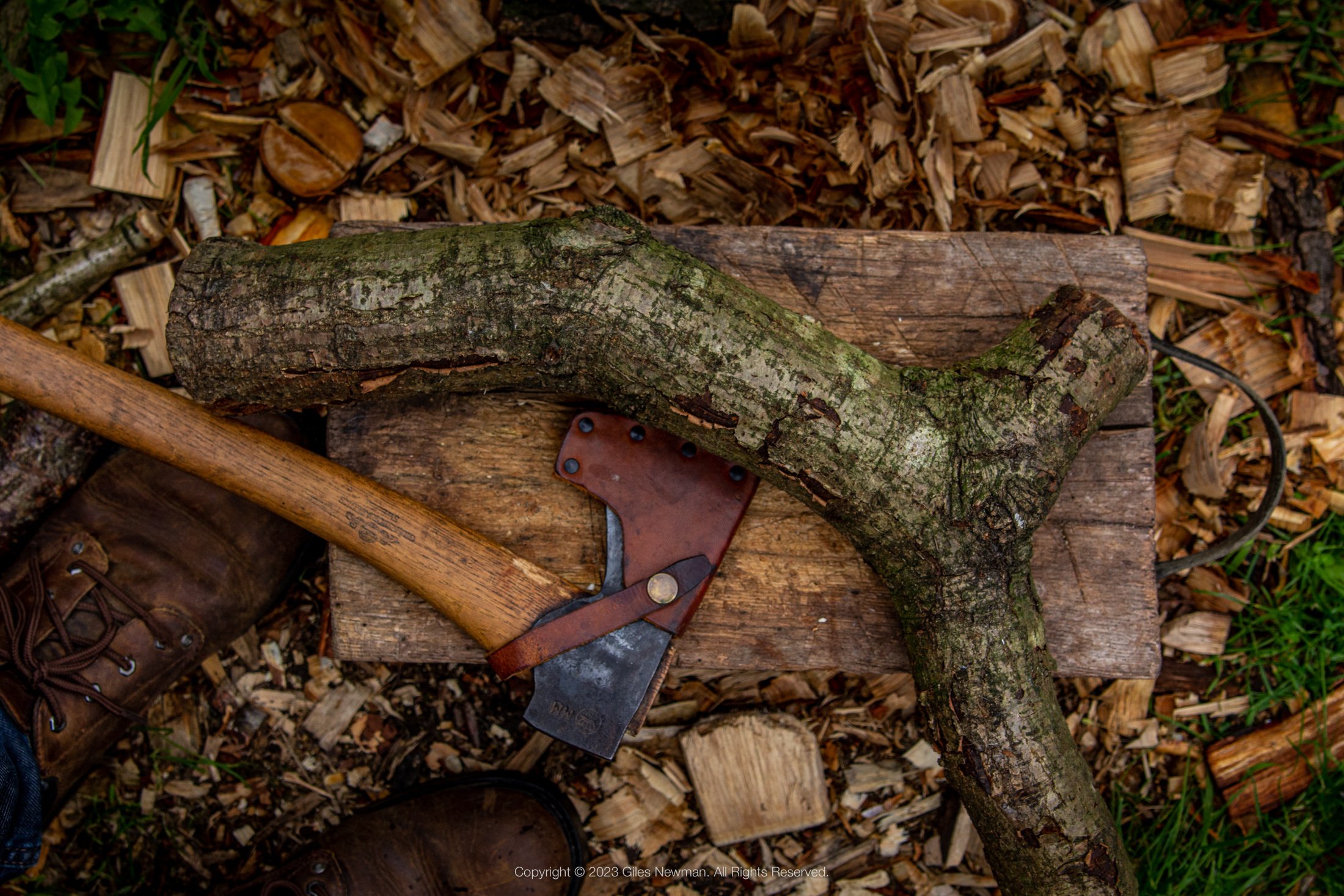
In Pursuit of Sustainability
My creative process is founded on the serendipity intrinsic in the sourcing of naturally fallen wood.
Sustainability is the heart of my work.
Until I started teaching myself to carve, in 2015, I had never explored wood as a creative material. In truth, my relationship with, and love for living woodlands means that I’ve always been uncomfortable with the idea of seeing wood as a ‘material’ for mans’ use as our usage is so often exploitative, destructive and unnecessarily wasteful.
My use of wind-fallen wood was initially an unconscious decision. I first started to carve whilst staying in a small woodland that I help to manage in North Wales where wind-fallen wood was immediately available and required no real effort to obtain. I accepted that my use of naturally fallen timber meant that the pieces of wood I was working with were far from what, in conventional terms, is considered ideal to carve with, often full of knots with twisted and unpredictable grain, as I had no experience or knowledge of the craft or it’s conventions. My carving methods have developed in isolation from outside influence and are based purely around the nature of this wood with all of the challenges it presented. I use the natural features of the wood such as the knots and other elements often considered imperfections, as a guide for what I am going to create. Instead of seeing the wood as a blank canvas and forcing my ideas into reality, I find and interpret the forms that already exist within it.
Furthermore, as I intend my work to be a celebration of nature and of the trees from which it is carved, to fell or otherwise harm a living tree for the purposes of my carving would be a huge ethical contradiction. Since the weather here in the UK means that naturally fallen wood is in plentiful supply, there is really no need to seek alternative sources and working in this way means that what I do has a minimal impact on nature which in turn, I hope, serves to reinforce rather than undermine my creative intentions.